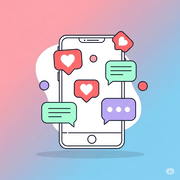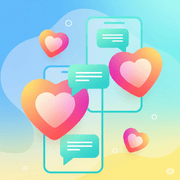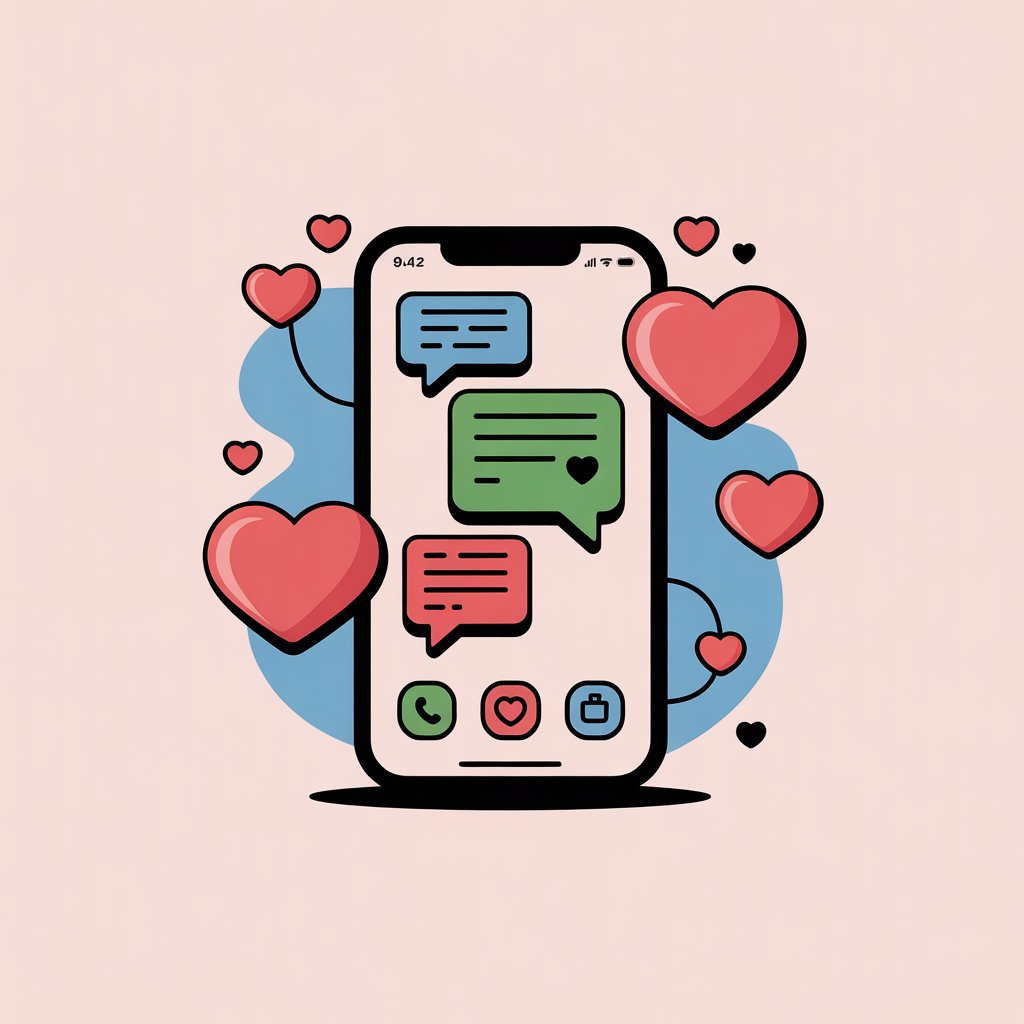You’ve been there. You match with someone, the first few messages are witty and engaging, and a flicker of excitement ignites. You start to imagine the possibilities. Then, suddenly… silence. Days turn into a week, and your last message sits there, a lonely, blue-bubbled monument to a conversation that died without a funeral. This is the all-too-common reality of modern dating, where ghosting feels more like a feature than a bug.
But what if you could change that narrative? While you can’t control someone else’s behavior, you can radically improve your own dating app experience by mastering the art of communication. It’s not about finding a magic opening line; it’s about building a foundation of clarity, kindness, and confidence that attracts better matches and makes the entire process less frustrating and more human.
Understanding the “Why” Behind Dating App Ghosting
Before we can fix the problem, it helps to understand why ghosting is so rampant in the digital dating world. It’s rarely as personal as it feels. Recognizing the underlying factors can help depersonalize the rejection and empower you to focus on what you can control: your own actions.
The Psychology of the Ghost
People who ghost are often not malicious monsters; they’re typically just choosing the path of least resistance. The digital veil of a dating app makes it easy to forget there’s a real person with real feelings on the other side. Some common reasons for this behavior include:
- Conflict Avoidance: The number one reason. Many people have an intense fear of confrontation, even the mild discomfort of saying, “Hey, I don’t think this is a match.” Disappearing feels easier and avoids a potentially awkward conversation.
- The Paradox of Choice: With a seemingly endless carousel of potential matches, it’s easy for some to devalue any single connection. The “what if someone better is just one swipe away?” mentality can lead to a lack of investment in current conversations.
- Lack of Stakes: In the early stages of chatting on an app, there are no shared social circles or real-world consequences for disappearing. The low-stakes environment enables poor etiquette.
- Emotional Unavailability: Some people are on apps for validation or to pass the time, not to genuinely connect. When a conversation starts to require real effort or moves toward a real-life meeting, they panic and vanish.
Why Being Ghosted Stings So Much
The sting of being ghosted is real and valid. It’s not just about a missed connection; it’s about the lack of closure. Our brains are wired to seek answers and complete patterns. When someone disappears without a word, it leaves a void filled with questions:
- “Was it something I said?”
- “Did they find someone better?”
- “Are my photos misleading?”
This ambiguity can send you into a spiral of self-doubt and chip away at your self-esteem. It feels like a profound form of social rejection because it denies you even the basic courtesy of an explanation, leaving you to write the ending yourself—and we are often our own harshest critics.
Your Profile: The First Step in Better Communication
Excellent communication doesn’t start with your first message; it starts with your profile. A well-crafted profile acts as a filter and a conversation-starter rolled into one. It should give people a clear idea of who you are and provide easy “ins” for them to start a meaningful chat.
Go Beyond the Basic Bio
Your bio is prime real estate. Wasting it with clichés like “I love to travel and laugh” or “Just ask” is a missed opportunity. A great bio shows, it doesn’t just tell. It should be specific, inject some personality, and ideally, include a hook.
Consider this comparative table:
| Boring, Generic Bio | Engaging, Communicative Bio |
|---|---|
| “Lover of food, travel, and The Office. Looking for a partner in crime.” | “Working on perfecting my spicy margarita recipe, currently at a 7/10. Lifelong The Office fan who believes the ‘Dinner Party’ episode is a masterpiece. Tell me your controversial TV opinion.” |
| “Engineer. I like hiking and dogs.” | “Day job: building things that hopefully don’t fall over (civil engineer). Weekend job: trying to tire out my golden retriever, Gus, on the trails. Currently searching for the best tacos in town—recommendations welcome!” |
The second column gives specific details (spicy margaritas, Gus the dog) and actively invites a response (“Tell me your controversial TV opinion,” “recommendations welcome!”). It starts the conversation before you even match.
Use App Prompts to Your Advantage
Apps like Hinge and Bumble use prompts for a reason—they are designed to break the ice. Don’t waste them with one-word answers. Use them to reveal a quirk, a passion, or a sense of humor. Answer them in a way that begs a follow-up question.
- Instead of: “I’m overly competitive about… everything.“
- Try: “I’m overly competitive about… Mario Kart. I will not apologize for using the blue shell.“
- Instead of: “A random fact I love… otters hold hands.“
- Try: “A random fact I love… that otters hold hands while they sleep so they don’t float away. I aspire to that level of ‘better together.’“
Each improved answer provides a clear and fun jumping-off point for someone to message you.
Mastering the Art of the Chat
Once your profile is set, the real work begins. Moving from a match to a date requires a communication strategy that is engaging, balanced, and clear.
Crafting an Opener That Isn’t “Hey”
Starting a conversation with “hey,” “hi,” or “wyd?” is the digital equivalent of making lukewarm eye contact across a crowded room and doing nothing else. It puts all the pressure on the other person to be interesting. A great opener shows you’ve paid attention.
The Formula: Comment + Question
- Comment on something specific in their profile. This proves you read it.
- Ask an open-ended question about it. This makes it easy for them to reply.
Examples:
- “That picture of you hiking in Zion looks incredible! I’ve always wanted to go. What was your favorite trail there?”
- “Your bio says you’re on a quest for the best tacos. As a fellow taco enthusiast, I have to ask: what’s your current top spot?”
- “I see you’re a fan of the ‘Dinner Party’ episode. Bold choice! I’m more of a ‘Stress Relief’ person myself. What makes ‘Dinner Party’ your number one?”
Keeping the Conversational Ball Rolling
A good chat is like a tennis match; it requires a steady back-and-forth. If you’re only asking questions, it feels like an interview. If you’re only talking about yourself, it’s a monologue. Strive for balance.
- Share and Ask: Answer their question, then ask one of your own. “My weekend was great, I went on a long bike ride. How about you? Did you get up to anything fun?”
- Ask Open-Ended Questions: Avoid questions that can be answered with a “yes” or “no.” Instead of “Did you have a good day?” try “What was the best part of your day?”
- Find Common Ground: When you discover a shared interest, lean into it. “You’re a fan of board games too? Amazing! Have you played Wingspan? It’s my current obsession.” These shared threads are what build a genuine connection. This type of engaged dialogue is a core tenet of effective interpersonal communication.
The Anti-Ghosting Toolkit: Communicating with Clarity
The most powerful tool against the frustrations of ghosting is to become the change you want to see. This means learning how to communicate your own lack of interest with kindness and class. Not only is it the right thing to do, but it also helps you take control and move on without ambiguity.
The “Honest Exit” Script
So you’ve been chatting for a few days, and you’ve realized the spark just isn’t there. It’s tempting to just let the conversation fade, but this is a prime opportunity to practice better communication. A simple, kind, and direct message is all it takes.
Templates for a Respectful Bow-Out:
- “Hey [Name], I’ve really enjoyed chatting with you, but to be honest, I’m not feeling the romantic connection I’m looking for. I truly wish you the best of luck on here!”
- “It’s been fun getting to know you a bit! I don’t think we’re quite a match, but I wanted to be upfront about it. Take care!”
- “I appreciate the conversation we’ve had, but I’m going to be honest and say I don’t see this progressing further. Wishing you all the best.”
Ninety-nine percent of people will appreciate the honesty. It provides the closure that ghosting denies and allows both of you to move on cleanly. It might feel awkward for a few seconds, but it fosters a much healthier dating environment.
What to Do When You’re Genuinely Busy
Sometimes life just gets in the way. A busy week at work or a family emergency can leave you with no time or energy for witty banter. Instead of going silent and risking being perceived as a ghost, send a quick message to manage expectations.
The “Busy” Message Template:
“Hey! Just wanted to give you a heads-up that this week is going to be incredibly hectic for me with a big project deadline, so I might be slow to respond. I’m still interested in chatting, though. Talk soon!”
This simple act shows respect for the other person and their time. It communicates interest while honestly stating your availability, which is a sign of great relationship communication skills, even at this early stage.
Transitioning to an In-Person Meeting
The goal of a dating app is to get off the dating app. If the conversation is flowing well after a few days to a week, it’s time to suggest a date. Lingering in the chat phase for too long can cause the connection to fizzle out.
How to Ask:
- Be Specific: Don’t say, “We should hang out sometime.” That’s vague. Suggest a specific, low-pressure activity. “This has been fun! I’d love to continue this conversation in person. Are you free for a coffee or a drink sometime next week?”
- Reference the Conversation: “Since you said you’re on a quest for the best tacos, what if we go check out [Taco Place] on Tuesday?” This shows you’ve been paying attention.
Ultimately, navigating the world of dating apps is a skill. It’s about presenting yourself authentically, engaging with genuine curiosity, and treating others with the respect and clarity you hope to receive. You can’t stop everyone from ghosting, but you can build a communication strategy that minimizes the frustration and maximizes your chances of finding a real connection. By choosing to be a better communicator, you take back your power and make the journey a lot more enjoyable, regardless of the outcome of any single match.
Improving how you interact is not just about finding a partner; it’s about respecting your own time and emotional energy. The digital dating landscape can be tough, but with the right approach, you can navigate it with confidence. Extensive research on better communication on your dating app shows that while many users face negative interactions, a significant number also find success and form meaningful relationships, often by employing clearer and more direct communication tactics.



